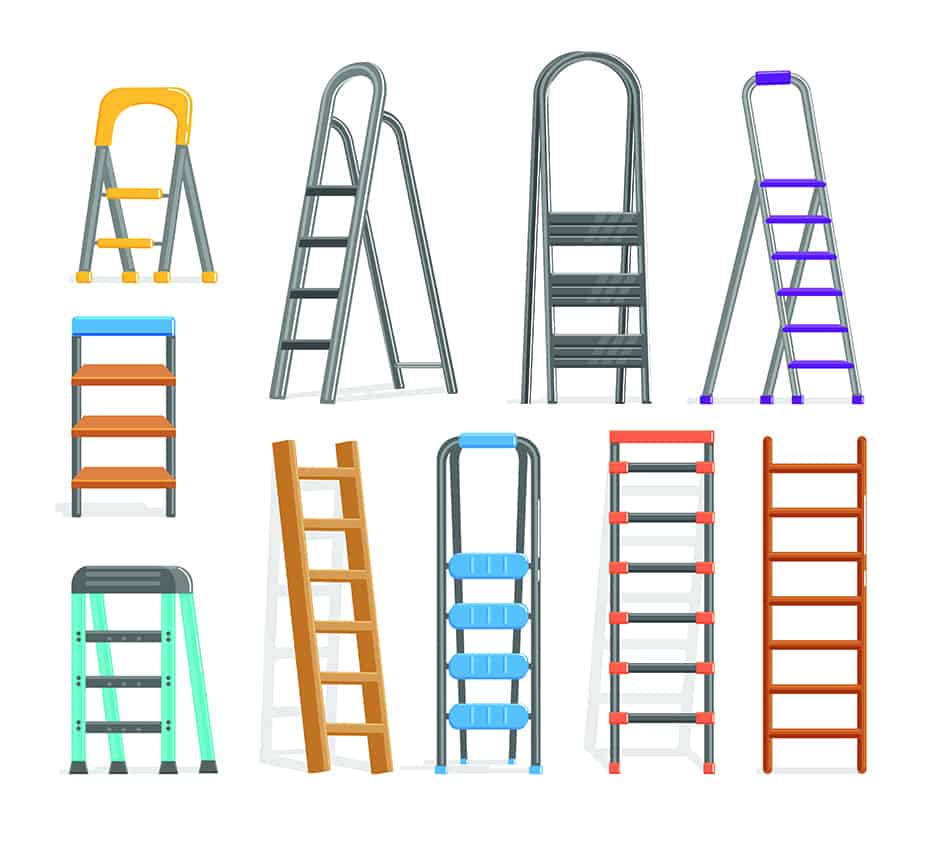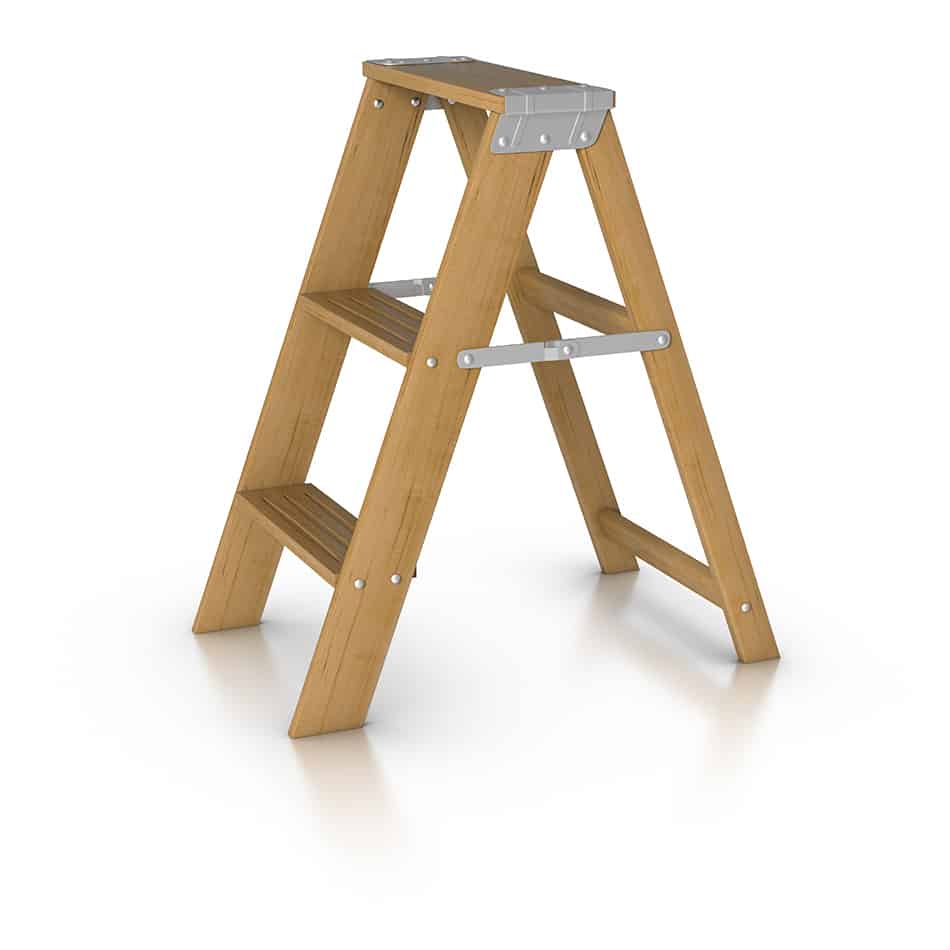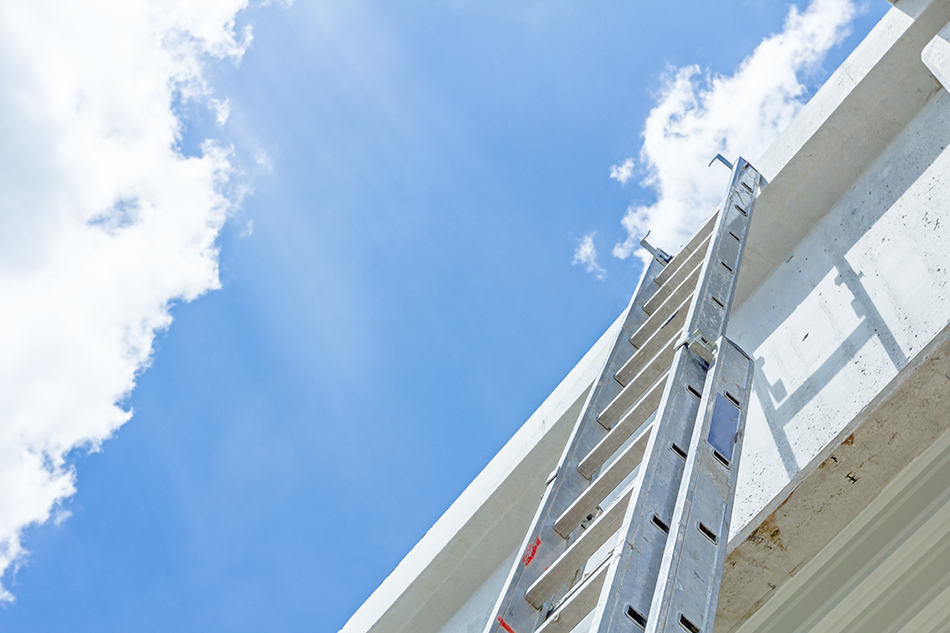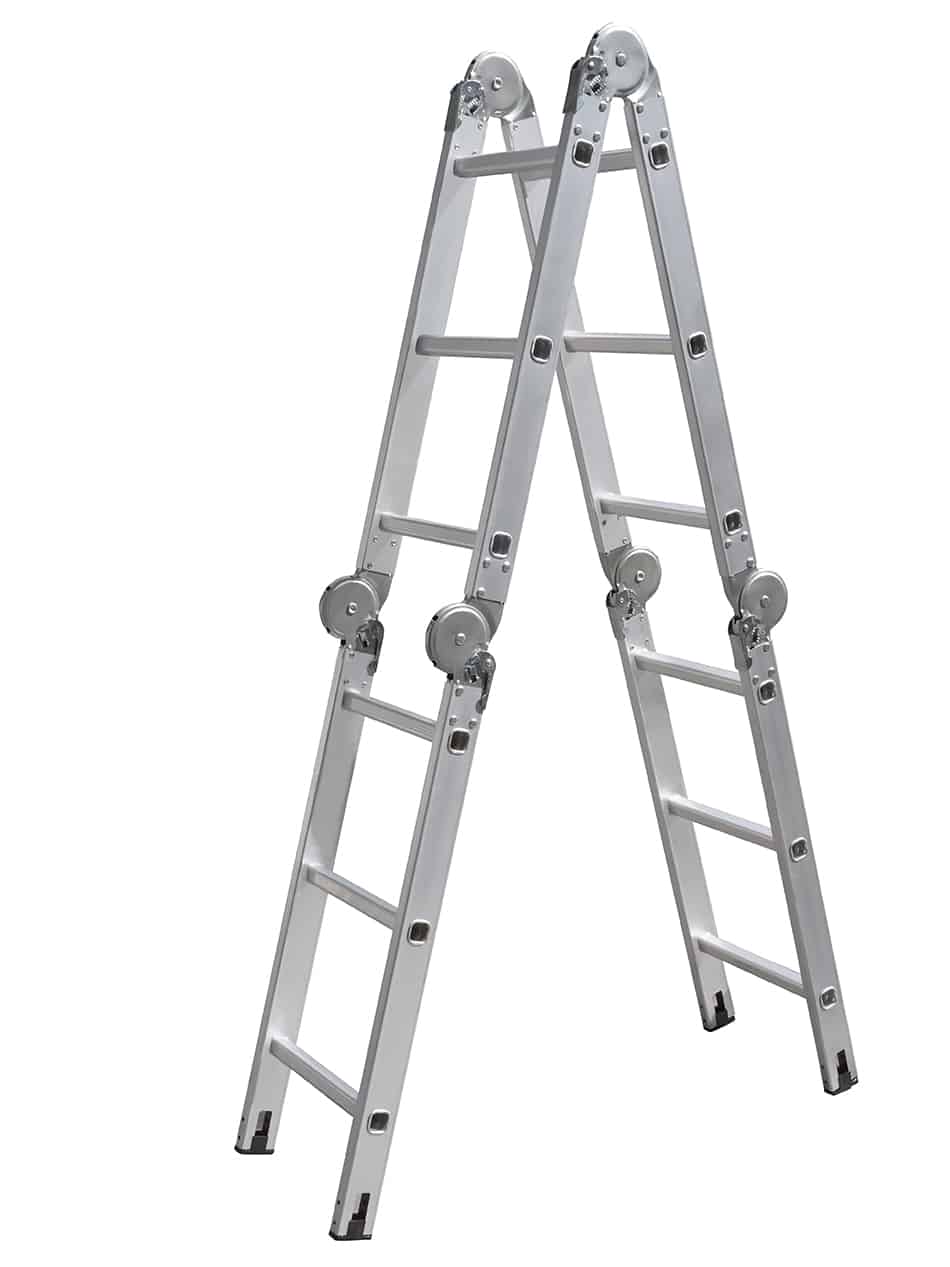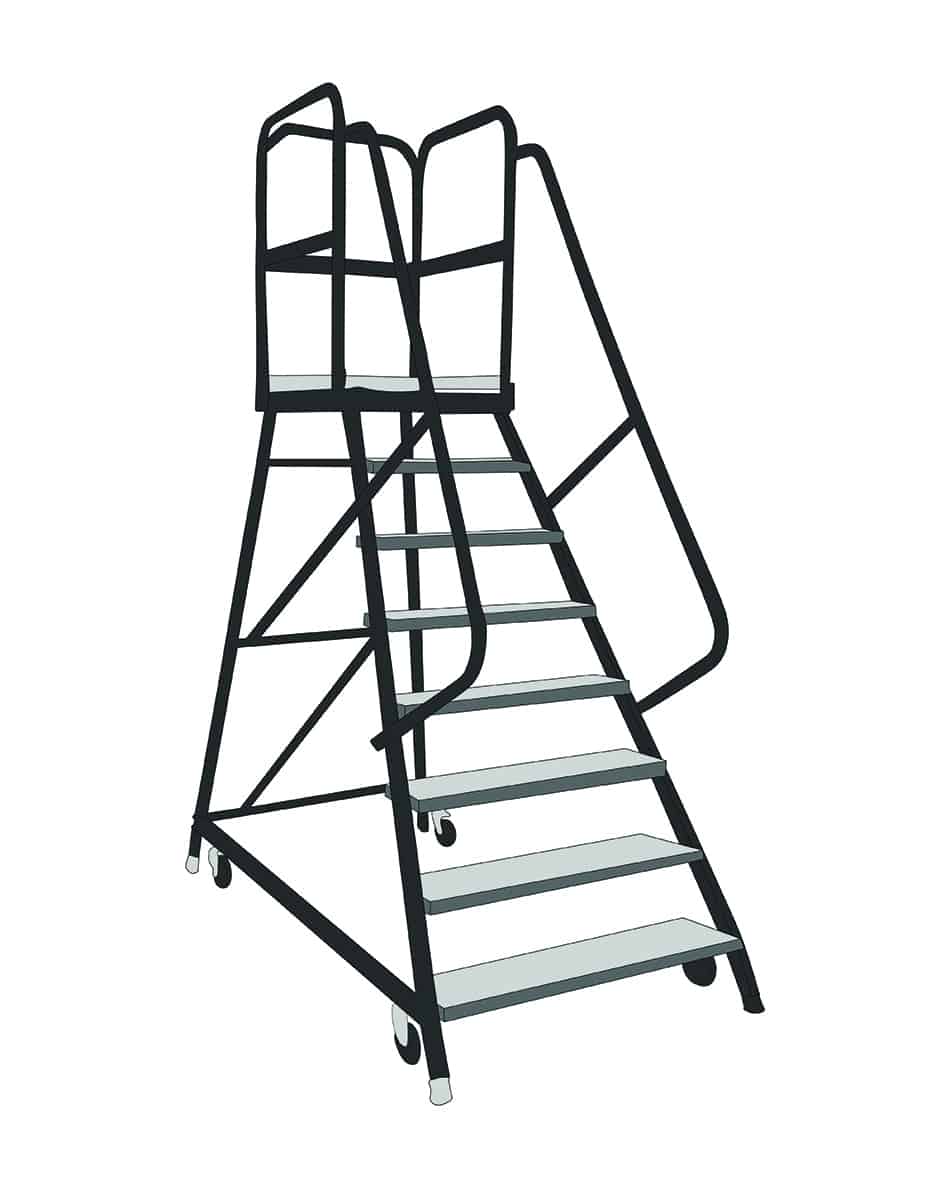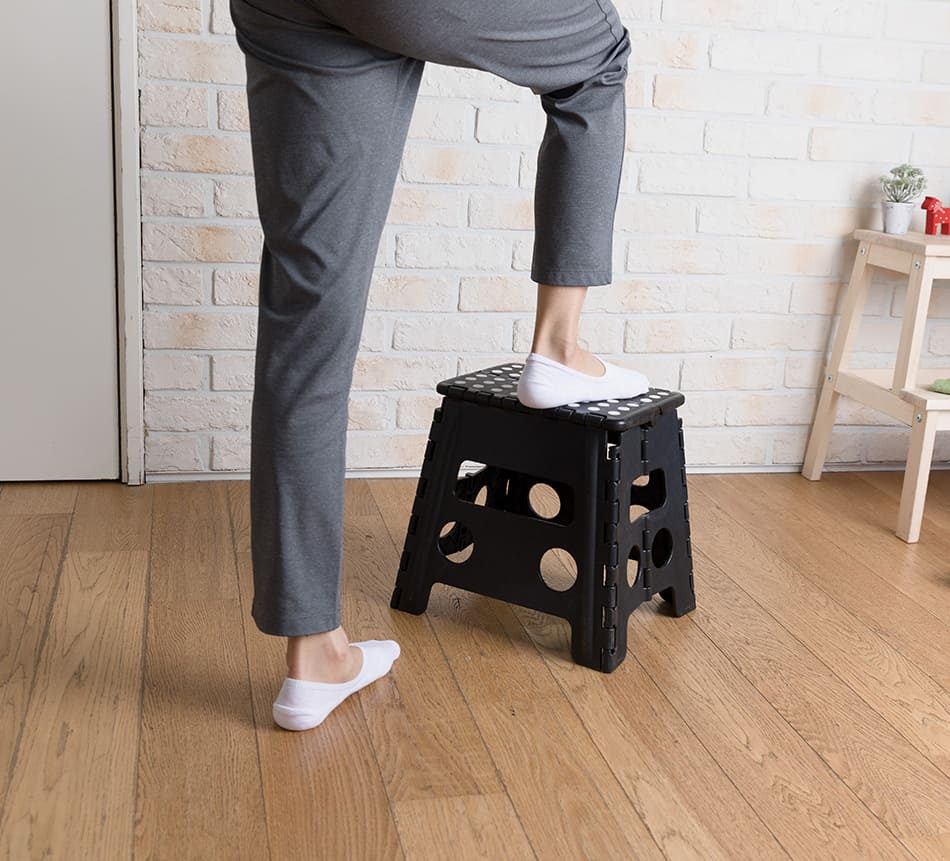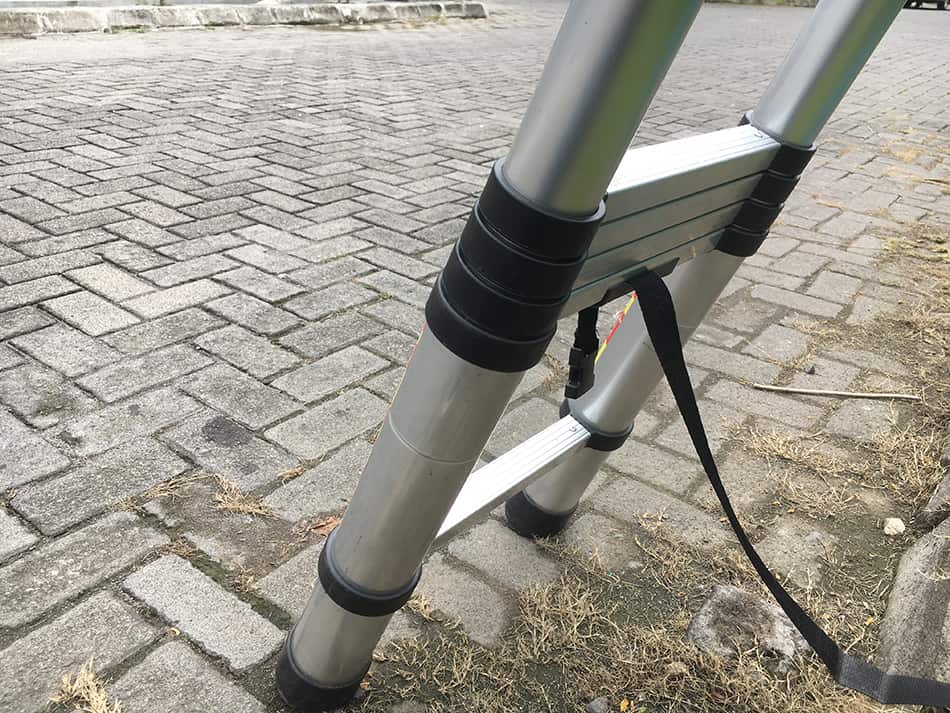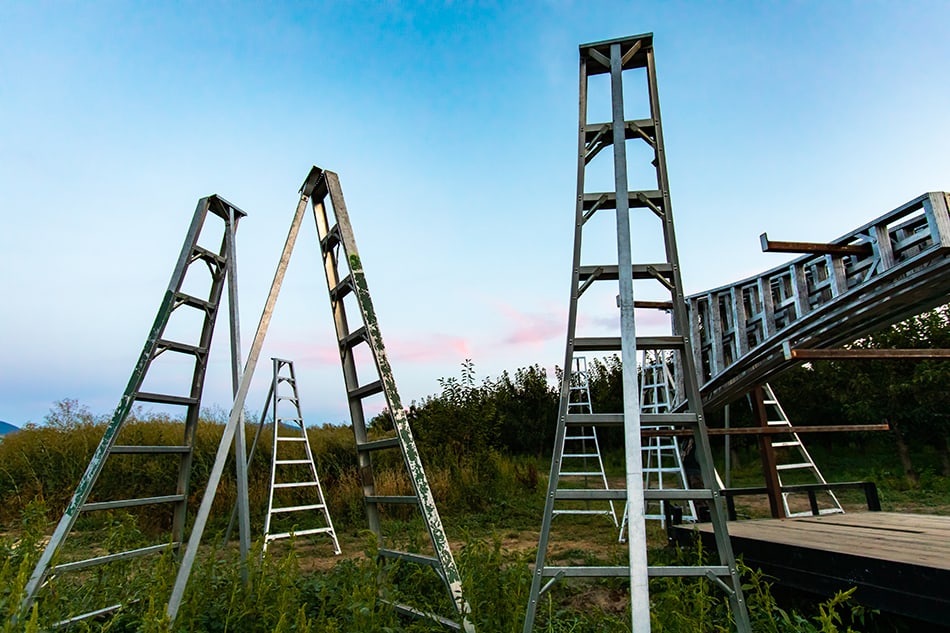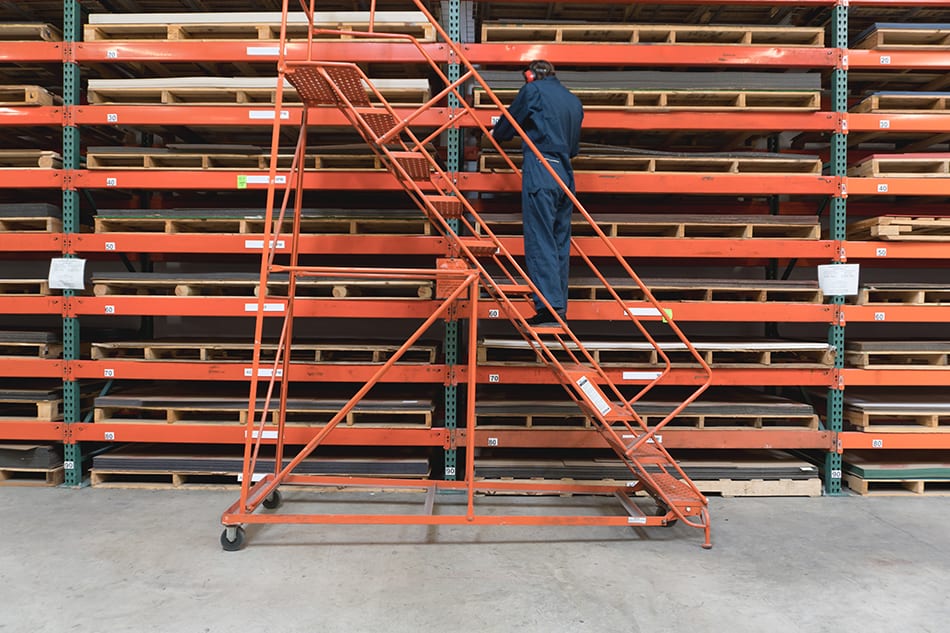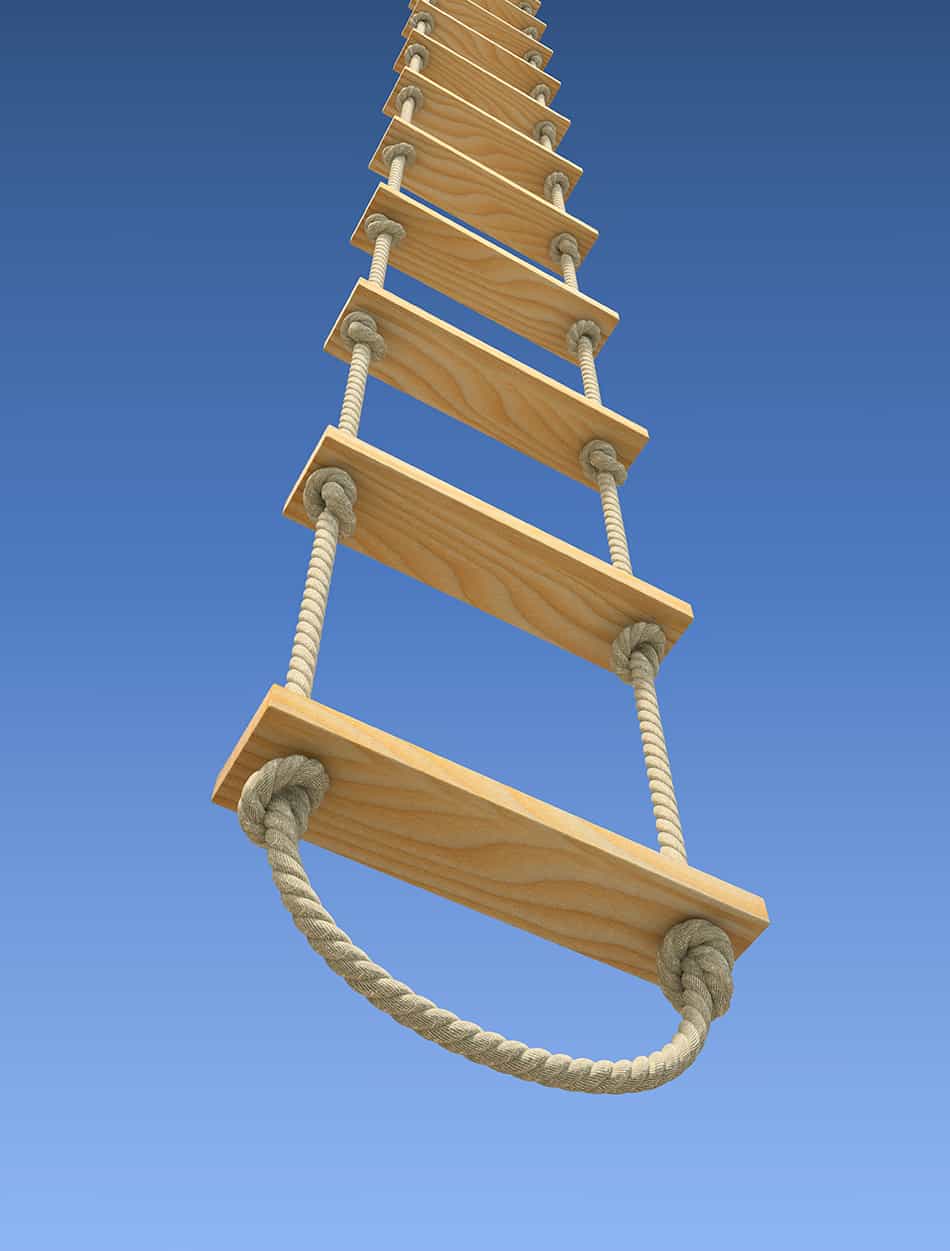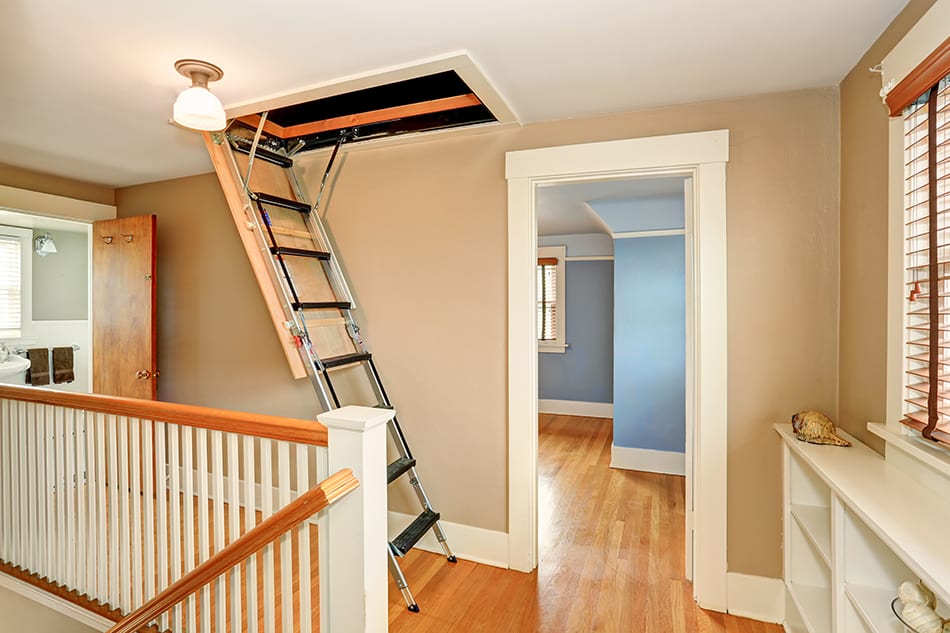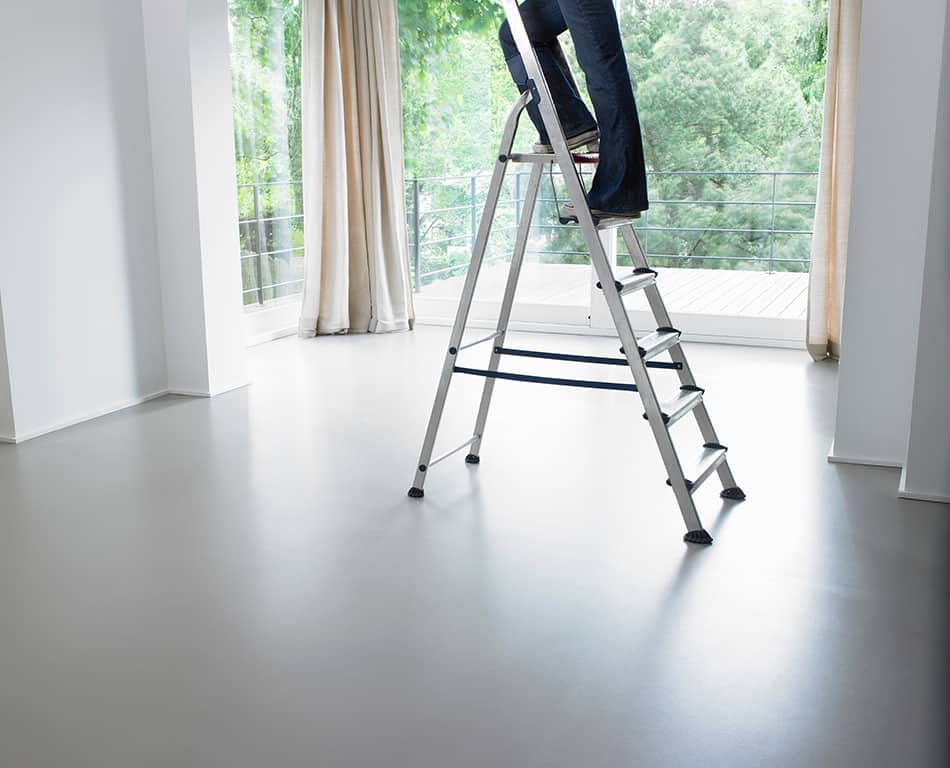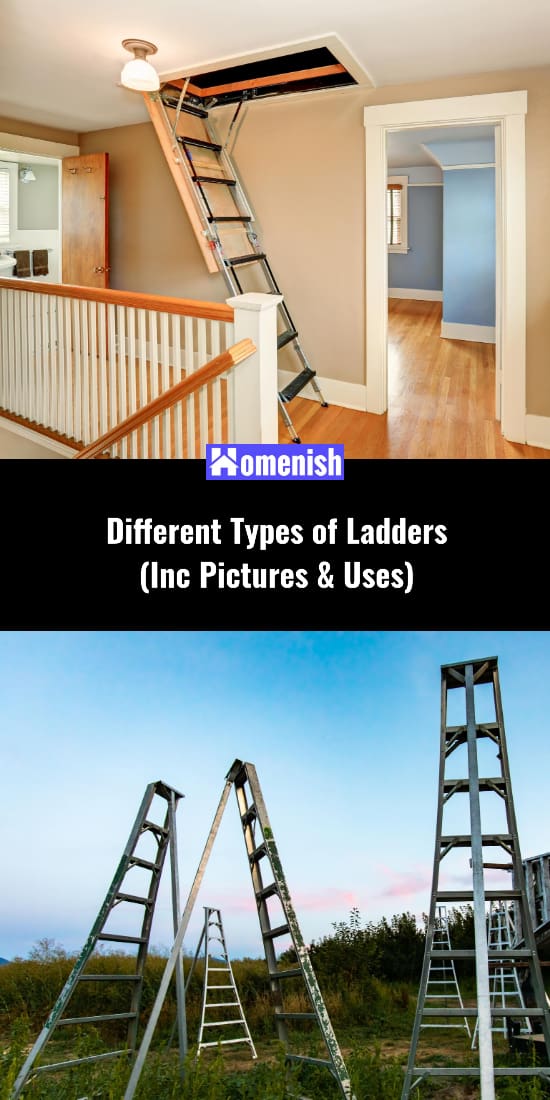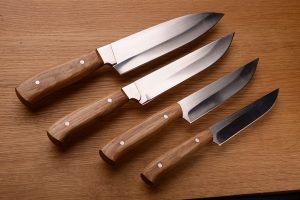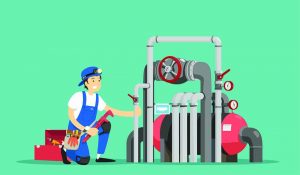A ladder is an essential tool in every home or workplace because it allows you to complete certain tasks with ease, especially when heights are involved. Unfortunately, picking the first ladder that you see at the store is not the best way to buy this tool. Keep in mind that ladders come in various types, sizes, and functions. Additionally, choosing the best product for you can be confusing, especially if you don’t know its type and purpose.
The good news is that we can help you find the right product that can accommodate your needs. This article contains various information about the different types of ladders, along with their functions, advantages, and disadvantages.
What Counts as a Ladder?
A ladder is any tool with repeated steps or rungs, which are placed in the middle of two poles or rails. Its primary purpose is to enable people to get to high places. Remember, some objects or structures are taller than people. A ladder can help you reach high areas or places by giving you additional height. By using this tool, you’ll be able to finish your task safely and efficiently.
Ladders are made from various materials, including wood, steel, aluminum, fiberglass, and rope. Some of these materials are stronger and more durable than others, so you have to be meticulous when buying ladders. Aside from that, this essential tool has different functions, depending on its type. As such, you need to know the different types of ladders. Through this, you’ll be able to determine the right product for you.
Types of Ladders
Step Ladder
A step ladder is the most used ladder all over the world because it is simple and easy to use. For its parts, it has flat steps and two pairs of rails that are connected by hinges.
When fully open, a step ladder has a shape the resembles a letter A. Aside from that, it is self-supporting. As such, you can place it at the center of a room, and it will stand on its own. For this reason, you can use this ladder when you’re cleaning the ceiling, changing lightbulbs, or adjusting curtain rods.
Keep in mind that the length of a step ladder is not adjustable; however, this tool is available in various lengths, which range from four to 20 feet. Lastly, it also features anti-slip feet, so it won’t slip or tip over while you’re using it.
A step ladder has two kinds, which include the following:
Front Step Ladder
A front-step ladder is an A-shaped ladder with two sides. One of its sides has rungs or steps, while the other side is only meant for support. As such, this type of ladder is designed to be used by one person.
Twin Step Ladder
Like the front-step ladder, a twin-step ladder has an A-shape. The difference between the two is that the latter has rungs or steps on both sides. This feature allows two people to climb the ladder at the same time.
Extension Ladder
An extension ladder is a straight ladder; thus, you need to keep it stable by leaning it against a sturdy wall or structure when you’re using it. Even though it is not self-supporting, this type of ladder enables people to reach high places. As such, it is typically used for tasks that require a long ladder. For example, you can use this tool when you need to go to the roof.
An extension ladder has two parts, which are the base and the fly. Keep in mind that the base (the main or lower part of the ladder) should be securely placed on the ground.
That way, the ladder will not move sideways while you’re using it. Once stable, you can adjust the fly (the extendible part of the ladder) to your desired length or height. This ladder’s adjustable feature is thanks to a rope and pulley system that allows the fly to slide upwards.
Aside from being extendible, extension ladders also have some features that ensure safety. To be specific, it has non-skid feet and hooks that secure the position of the ladder.
Overall, extension ladders are popular for domestic use because of their capability to reach high places.
Folding or Articulated Ladder
An articulated ladder is a versatile tool because it combines the features of an extension ladder and a step ladder. To explain further, it has several locking hinges that allow the user to change its form, enabling him to use it for various tasks. For example, you can bend it into an A-shaped ladder if you need to use it at the center of a room. If you need to reach high places, you can also turn it into a straight ladder. Additionally, you can also turn this ladder into a workbench, a staircase, and a low-level platform.
An articulated ladder is also foldable. As such, it doesn’t require a lot of storage space. Plus, it is portable; thus, you can bring it anywhere. Also, it has anti-slip feet, which ensures safety. Because of these features, this type of ladder is the ideal choice for construction and electric work.
Despite its numerous advantages, an articulated ladder has a drawback. To be specific, it is quite expensive compared to some types of ladders. Even so, you’ll get all your money’s worth because of its great features and many uses.
Platform Ladder
A platform ladder has a similar appearance to a step ladder. As such, it is also a self-supporting tool. The difference between the two is that it comes with a platform, which serves as its top step. Usually, the platform has railings that ensure safety. Because of these features, a user can comfortably stand on the ladder, even for a long period. Additionally, this type of ladder is recommended if you’re going to use your hands while working.
A platform ladder is not adjustable. Aside from that, it is also bulky due to its platform. For this reason, storage can be a problem if your home doesn’t have a lot of space. Transporting it from one place to another can also be an issue because of its massive weight.
Despite its drawbacks, a platform ladder is still one of the best types of ladders because it offers comfort and safety, especially if you’re going to stand on the ladder for hours. An added bonus is that it comes with a budget-friendly price tag.
Step Stool
Although small, a step stool is handy around the house, especially if you need to grab something from a high shelf, cabinet, or cupboard. Usually, this type of ladder features a single step, but there are some step stools that have two, three, or four steps.
A step stool and a step ladder have similar features. For example, both types of ladders are can stand on their own because of their A-shaped structure. The difference between the two is their size. To explain further, a step stool is designed to be small and compact. Additionally, it has a folding mechanism, so it does not require a lot of storage space. Plus, it is lightweight and portable; thus, you can bring it from one area to another with ease.
A step stool can offer numerous benefits; however, it has some limitations. For one, it is not as stable as other types of ladders on this list. It is also short, so you won’t be able to reach very high places.
Telescopic Ladder
A telescopic ladder has similar features to an extension ladder. To be specific, you can adjust the height of the two ladders according to your needs. The difference between the two is that a telescopic ladder offers high-end features.
As its name implies, a telescopic ladder can act as a telescope. As such, it can be lengthened or shortened to your desired height. Additionally, it also comes with a retraction button that allows users to adjust it with ease. Plus, it has colored tab locking indicators. Through this feature, the user will know if the ladder is ready and safe to use.
Another great feature of this tool is its compact size. Because of characteristic, you don’t have to worry about storage space. Plus, it has a lightweight design, which enables you to bring it anywhere. Lastly, you are guaranteed that telescopic ladders are long-lasting and durable because they are made with aircraft-grade aluminum alloy.
With all these features, a telescopic ladder is surely one of the best types of ladders on the market. However, it is expensive, and its maintenance cost is higher compared to the other ladders on this list. Even so, a telescopic ladder is definitely a worthy purchase because of its great features.
Podium Ladder
A podium ladder is like a platform ladder. The difference between the two is that a podium ladder has a bigger top step compared to a platform ladder. Because of this feature, you will not only be able to stand comfortably on the ladder. You can also move around the podium without the fear of falling.
Another great feature of this ladder is its strong frame and legs, making it stable and safe for use. It also has anti-slip feet, which prevent it from slipping or tipping over while you’re using it.
A podium ladder is suitable for tasks that require you to stand on the ladder for a long period. For example, you can use this type of ladder when you’re painting or cleaning a wall.
Despite being a great tool, a podium ladder is heavy and bulky because of its large top step. For this reason, storage can be a problem, especially if you don’t have a lot of space. Nonetheless, podium ladders are the ideal choice for painting and construction work.
Platform Trestle Ladder
A platform trestle ladder has two ladders. It also has a platform, which is located between the two A-shaped ladders. Aside from that, the platform has enough room for the user to place his tools and walk back and forth. Because of this feature, this type of ladder is ideal for tasks that require you to move horizontally, like when you’re painting a large wall or cleaning window frames.
A platform trestle ladder is non-adjustable; however, it comes in various sizes. The maximum height you can purchase is up to 20 feet. Aside from that, this type of ladder is durable and sturdy because it is designed to be used by two people at the same time.
With all these great features, a platform trestle ladder is an excellent product, especially for construction work. Unfortunately, this ladder needs a lot of storage space because of its large size.
Tripod Ladder
A tripod or orchard ladder is the ideal ladder for gardening jobs. Keep in mind that gardens have slopes and uneven grounds. For this reason, a tripod ladder is useful because it has a triangular base, which ensures that the ladder will not topple while you’re working at a high place. Additionally, its legs are also adjustable. This feature will make sure that the ladder is stable even if you use it on uneven terrains.
Aside from those features, a tripod ladder also has specialized feet that enable it to stand on soft ground. Most tripod ladders also have a platform so that the user can work safely and comfortably. Finally, this type of ladder has a lightweight design; thus, you can move it around the garden with ease.
Like most ladders on this list, a tripod ladder is bulky. As such, it needs a lot of storage space.
Warehouse Ladder
A warehouse ladder is an uncommon type of ladder. The reason is that it is only suitable for use in a warehouse, factory, or barn-like facility. For its function, this type of ladder will enable the user to move various objects from one area to another, including high places, with ease.
A warehouse ladder has a large platform and railings. These features provide safety and stability while you are standing on top of the ladder. It also has caster wheels that allow you to move the ladder from place to place easily. Lastly, this type of ladder has a strong frame, which is usually made with metal. As such, you are guaranteed that the ladder can withstand the various tasks in the warehouse or factory.
Rope or Flexible Ladder
When the object you need to climb is curved, a rope or flexible ladder is often used. As you know, this type of ladder has rails made of a sturdy rope, wire, or chain. As such, instead of standing tall like a rigid ladder, you need to tie or hook it on a solid structure so you can use it.
Typically, rope or flexible ladders are used for recreational purposes, like caving, hiking, and tree climbing. Aside from that, it is also an ideal choice if a rigid ladder won’t fit because of limited space. Also, rope ladders are commonly used in ships and boats. In some cases, this type of ladder can also be used during emergencies. For example, there is a fire in your home. You can hang a rope ladder on your window so you can get out of your house.
Keep in mind that using a rope ladder tends to swing from side to side. As such, you need to have some skill and upper body strength to use this type of ladder.
Attic Ladder
Also known as a loft ladder, an attic ladder is a retractable stairway that you can pull down from the ceiling. When not in use, it can be folded into the ceiling frame so it won’t get in the way. These features make your every trip to the attic safer, easier, and quicker.
Typically, an attic ladder is attached to the attic door, and it is installed on the ceiling. It also has hinges that enable it to reach the floor at a certain angle.
Overall, a lot of people opt for an attic ladder instead of a stairway because it is cheaper and more convenient.
An attic ladder has two types, which include the following:
Folding Attic Ladder
Folding attic ladders are ideal for small attics. Aside from that, they are inexpensive and easy to install. However, this type of attic ladder is steep, with an angle of about 65 degrees. Additionally, it is less stable compared to a drop-down attic ladder.
Drop-Down Attic Ladder
Drop-down ladders are similar to regular stairs. Usually, it comes with a cord that you can pull to let the ladder glide downwards. Aside from that, it also has an inclination of about 40 degrees, which is more comfortable to navigate compared to the steep inclination of a folding attic ladder. Despite its benefits, this type of attic ladder is expensive. Plus, its installation requires a good amount of expertise.
General Safety Tips When Using a Ladder
1. Pick the Right Type of Ladder
As presented, there are numerous types of ladders, and each type is designed for a specific purpose. When picking a ladder, always consider the project you’re going to do, the environment, and the materials you’re going to carry while using the ladder.
Additionally, you should also check the labels on the side of the ladder’s railing. They will indicate the weight capacity of the ladder, along with the safe working height. These details are important to prevent future accidents.
2. A Solid Foundation is Vital
Before using a ladder, you have to set it up on an even and solid surface. If there is water or mud on the ground, don’t set up the ladder on that area. These hazards may cause the ladder to lose its resistance, resulting in an accident. For uneven terrains, such as gardens, you can use a tripod ladder, which is designed to stand on slopy or uneven grounds.
3. Always Check the Ladder’s Feet
The ladder’s feet is a vital part because it prevents the ladder from slipping. For this reason, always check the feet before using the ladder. If there are any signs of damage, you should replace the feet immediately.
4. Make Sure All the Parts are Complete
Keep in mind that every part of the ladder is crucial, even the tiniest screw. As such, you should always inspect the ladder before using it. If there are missing screws or other parts, don’t use the ladder. Aside from that, you should also check the rungs or steps. You should not use the ladder if the steps are loose. Lastly, if the ladder has missing parts, you should buy a new ladder.
5. Follow the 4-to-1 Rule
When setting up a ladder, you should use the correct angle. According to the California Department of Industrial Relations, a ladder should be set up a foot away from the wall for every four feet of height. For example, you’re going to lean the ladder against a 16-foot wall. As such, the base of the ladder should be positioned four feet away from the wall.
6. Move Slowly
Always use a ladder with caution and care. As much as possible, you should move slowly and avoid doing any abrupt movements. Also, you should always maintain balance by facing the ladder at all times. Remember, sudden movements, like bending, turning, or twisting, can disrupt your balance and cause an accident.
Aside from that, you should also maintain three points of contact when going up and down a ladder. The three points of contact mean that either your two hands and one foot or one hand and two feet should be touching the ladder at all times.
7. Check the Weather
If you’re going to use a ladder outdoors, you should first check the weather. The reason is that strong winds can cause a ladder to tip over, resulting in a fall or accident. For this reason, you should schedule your task during a clear and wind-free day.
